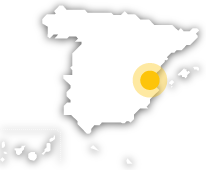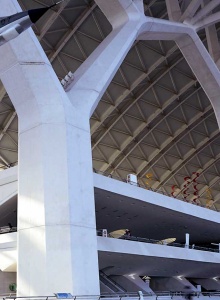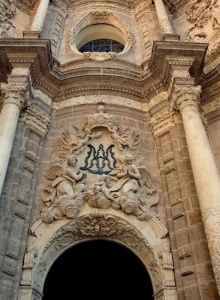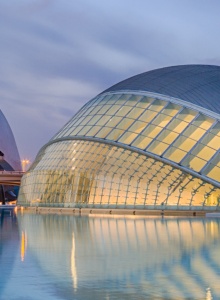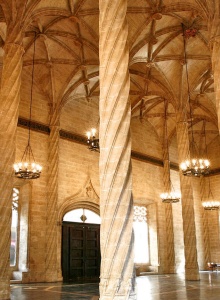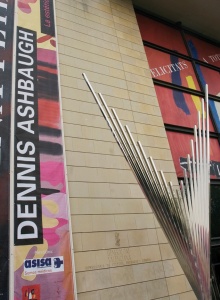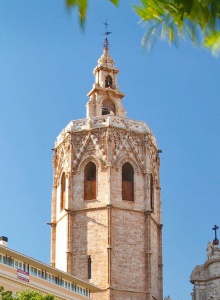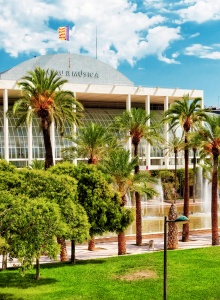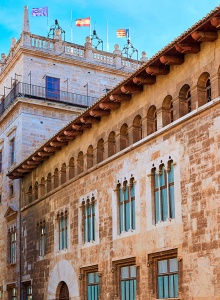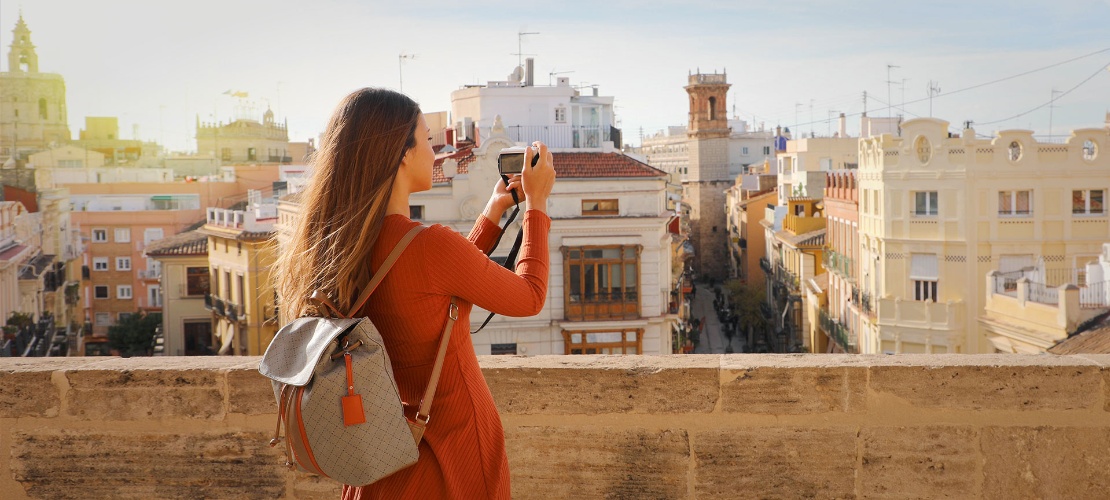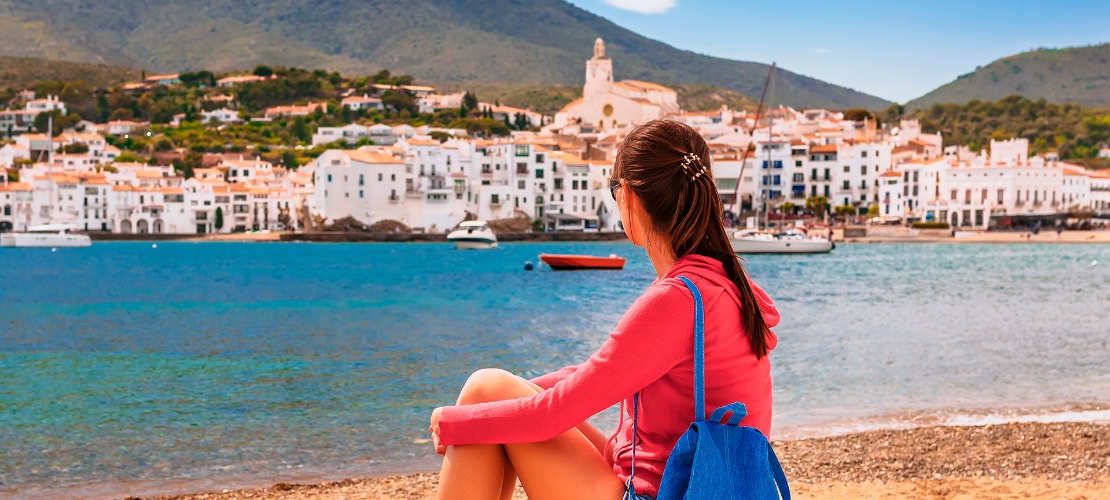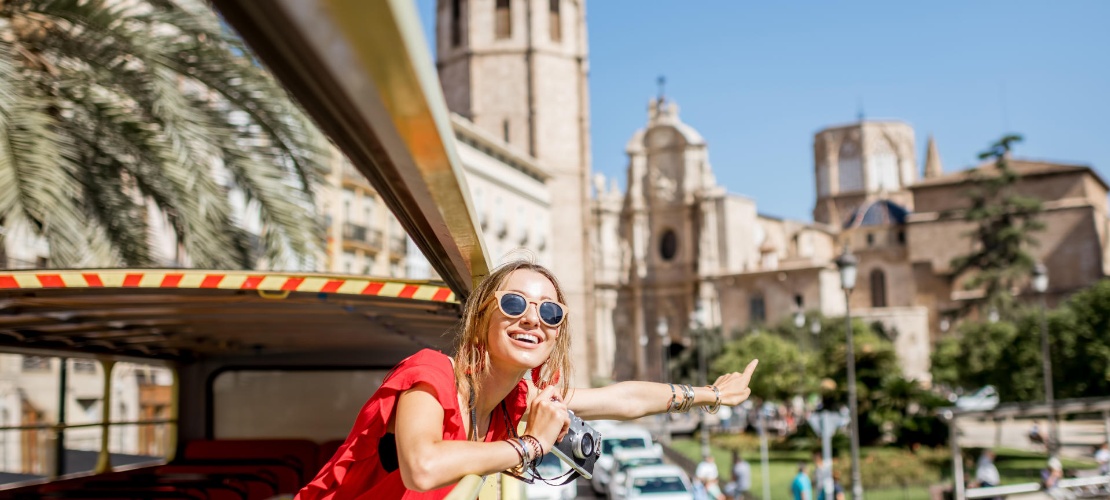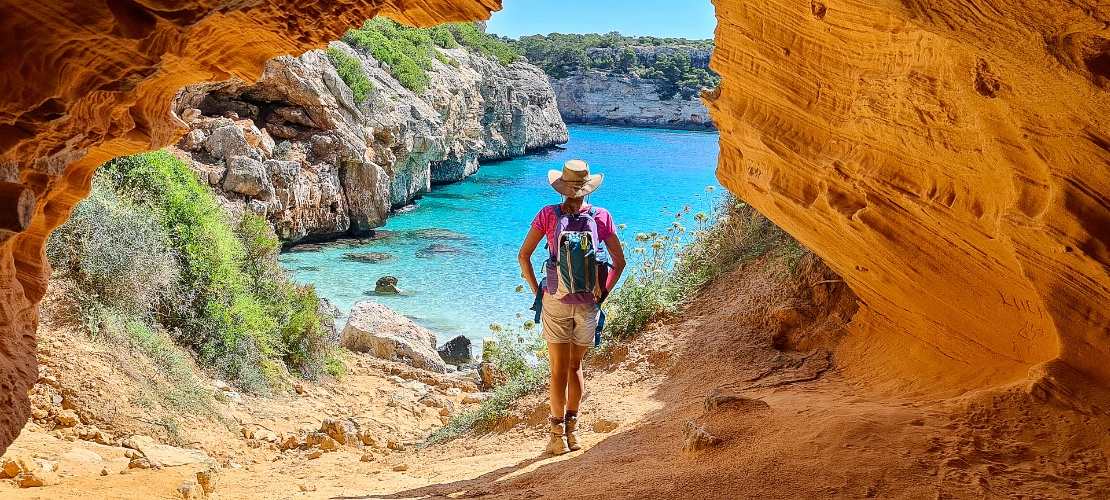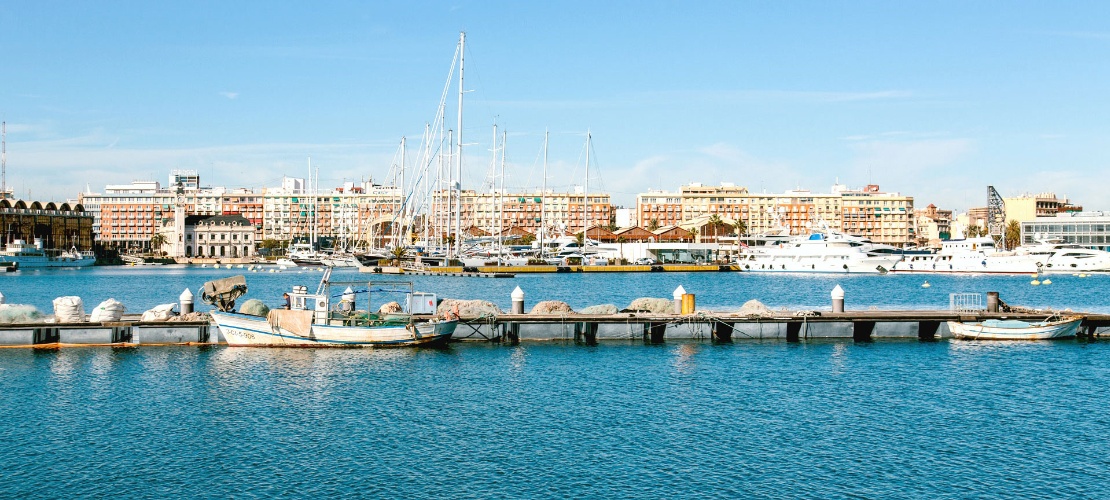
A place full of contrasts awaits the visitor with a charming old town next to futuristic buildings. This is Valencia, one of Spain’s most welcoming cities to spend a few days. Beyond the cultural effervescence of its cities, a stroll is always a good idea, or bathing at its Mediterranean beaches. Of course, you must try the star dish, paella (true authenticity!) and other delicacies such as clams or tiger nut milk.
Any time is a good time to visit Valencia, although if there is one day that is even more special than the rest, it's 19 March, when they celebrate the famous Fallas by burning gigantic ‘cardboard sculptures’. Its Mediterranean light, mild climate and the bewitching fire make this a city you’ll want to stay in.
Debe activar Javascript para poder utilizar este servicio
What to visit
Select from the list or hover over the map to find out about points of interest.
Activa JS
Other ideas for your trip
How to get there - transport information
Select the means of transport to see how to get there or how to get around at your destination.
How to get to aeroplane
-
The airport is 8 kilometres from the city, about a 15-minute drive on the A-3 and the V-11 motorway.
-
Metro lines 3 and 5 run between the airport and the city from the metro station on the ground floor of the regional flights terminal. The journey takes approximately 20 minutes.
-
City bus 150 takes you into the city centre in about 35 minutes. Operates from Monday to Sunday (07:35 a.m. to 10:15 p.m. on Sundays and holidays).
How to get to train
-
Valencia has two main railway stations:
-
Joaquín Sorolla Station:High-speed trains to Madrid, Cuenca, Seville, and Cordoba, and long-distance Alvia, Euromed and Intercity trains between Valencia and Barcelona or other cities. There is a free bus service to and from Estación del Norte for travellers arriving by train.You can easily leave the station by public transport: Metro lines 1, 2 and 7 (stop: Jesús) bus lines 27, 31 and 64 and taxi services.
-
North Station:This station is mainly for local trains, known as the Cercanías network.You can easily leave the station by public transport: Metro lines 3, 5 and 9 (stop: Xátiva), bus lines C1, 6, 7, 8, 9, 10, 11, 19, 28, 31, 35, 40, 60, 62, 63, 67, 70, 71, 72, 73 and 81 and taxi services.
How to get to boat
-
The Port of Valencia is about 5 kilometres from the city centre.
-
Many cruise lines stop here, mostly on routes to and from Italy and France.
-
There is a free transport service between the cruise terminals and the main terminal.
-
You can easily get from the port to the city centre using bus lines 4, 30 and 95, the latter of which passes by the City of Arts and Sciences.
How to get to bus
-
The Valencia Bus Station is very centrally located.
-
The following city bus routes run from the station: C2 and 95.
-
They connect to the rest of the metro network via lines 1 and 2 (stop: Turia, about a 5-minute walk).
How to get there by road
-
The AP-7 motorway links Valencia to Barcelona and Alicante.
-
The A-3 motorway runs to Madrid.
-
During 2025, a large part of the city centre will become a Low-Emissions Zone, where driving and parking are restricted. If you plan to visit Valencia by car or motorbike, find out about the possible restrictions before your trip through your accommodation.
Practical information
-
The main tourist areas can be explored on foot.
-
Tourist pass: The Valencia Tourist Card gives you free entry to some museums and monuments, as well as discounts on leisure activities. There are two types of cards: one that also allows you to use the bus, metro and tram for 24, 48 or 72 hours; and the 7-day pass without transport.
How to get around in metro/tram
-
The metro network operates from 4 a.m. to 11:30 p.m. during the week. On weekends, the schedule is extended at the end of the day: from 5:00 a.m. to 12:30 a.m.
How to get around in bus
-
Over 40 routes cover every neighbourhood in the city.
-
They normally run from 6 a.m. to 10 p.m.
-
The night bus service starts at 10:00 p.m., with different frequencies, on 24 of the usual lines (C3, 4, 7, 8, 9, 10, 14, 16, 19, 24, 25, 26, 27, 28, 60, 62, 64, 67, 70, 72, 73, 81, 93 and 99).
-
Take bus routes 24 or 25 or the Albufera Bus Turístic to get to La Albufera Natural Park.
How to get around in other means of transport
-
Taxi: vehicles easily identifiable by their white colour. A green light on the roof shows they are available.
-
Bicycle: an easy, unusual and sustainable way to get around the city. The city has an extensive cycle lane network. There are many bike rental companies, plus the municipal service Valenbisi.
Shows, festivals, sports...
View some of the most relevant events you will be able to enjoy at the destination.
